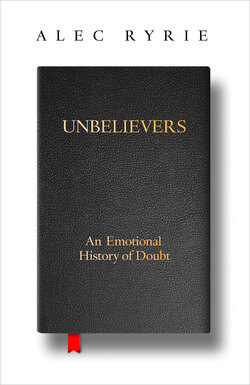Читать книгу Unbelievers - Alec Ryrie - Страница 9
Impostors, Drunkards and Flat-Earthers
ОглавлениеFrederick II, Holy Roman Emperor, King of Sicily, Germany, Italy and Jerusalem, was perhaps the most powerful ruler of the Middle Ages. According to Pope Gregory IX, he was also an unbeliever. In 1239 the pope accused Frederick of calling Moses, Jesus Christ and Muhammad ‘charlatans’ and ‘deceivers’ who had fooled the entire world, of scoffing at the notion ‘that a virgin could give birth to the God who created nature’, and of maintaining that ‘one should accept as truth only that which is proved by force of reason’. The pope and the emperor were bitter and long-standing enemies, and these charges were certainly exaggerated, but it is true that Frederick had a voraciously curious mind. He had been asking his favourite scholars some alarming questions. Where is God? Where are Heaven, Hell and Purgatory? What is beyond Heaven? What is the soul? Is it immortal? If so, why do the dead never return?[1]
Rumour had it that one of those scholars, Pietro della Vigna, had not only suggested to Frederick that Moses, Christ and Muhammad were frauds, but had written a book arguing the case: Of the Three Impostors. There is in fact no evidence that this book ever existed. Yet it became notorious purely on the basis of that wickedly alluring title. For nearly five centuries dreadful tales of it were whispered. Della Vigna’s name was eventually forgotten, but his imaginary book was not. Almost every unnerving or scandalous figure of the next few centuries was at some point credited with having written Of the Three Impostors – Giovanni Boccaccio, Niccolò Machiavelli, Miguel Servetus, Giordano Bruno and many more. Scholars, eccentrics and troublemakers hunted for copies. A scandalous Swedish princess offered a bounty for it. It was easy enough to meet someone who had met someone who had once seen the book, but not to get any closer. Finally, in the early eighteenth century, enterprising French atheists actually wrote a book to go with the fearsome title. Inevitably, the result was an anticlimax.[2]
If we want to understand unbelief in the Middle Ages, the supposed Age of Faith, Of the Three Impostors is a good place to start. Like the book, medieval unbelief existed in the imagination rather than in any fully articulated form. It was a rumour, not a manifesto; an inarticulate suspicion, not a philosophical programme. Its vagueness was what made it powerful.
It is sometimes said that atheism in pre-modern times was simply impossible. This claim, supposedly made by the great French literary historian Lucien Febvre, is now routinely dismissed by historians of atheism. But Febvre’s point was subtler than that. He was well aware that medieval and sixteenth-century Europeans frequently attacked religion, sometimes in scabrous terms, and that they readily accused one another of unbelief. His point was simply that, like Of the Three Impostors, these attacks and accusations had no substance. They were simply imaginings of what atheism might be. As such, Febvre concluded with magnificently Gallic disdain, unbelief of this kind ‘did not matter, historically speaking … It hardly deserves to be discussed, any more than the sneers of the drunkard in the tavern who guffaws when he is told the earth is moving, under him and with him, at such a speed that it cannot even be felt’.[3]
It is an intriguing comparison. Before we leave the tavern in search of some more genteel atheists, we should let the drunkard have his say.
How do we, in the early twenty-first century, know that Febvre’s drunkard is wrong and that the earth is indeed moving? Very few of us have the astronomical skill to determine the question for ourselves. We believe it because learned authority tells us it is true; because it is an important part of a wider web of knowledge we have about the world around us; and because we have seen very persuasive pictures explaining it. And yet, like Febvre’s drunkard, we sometimes struggle to hold on to the fact. We say that the sun ‘rises’ even though we know it does no such thing. We treat the ground beneath our feet as if it were stationary. It feels stationary. For most practical purposes, it might as well be.
To wonder nowadays whether the earth really is moving, and whether five centuries’ worth of accumulated astronomy is a hoax, you do not need to be a drunkard or a fool. You need to be independent-minded and self-confident. You need to be suspicious: ready to believe you are being lied to. And it helps if you are not very well educated. If you are woven too tightly into our civilisation’s web of knowledge, you will not be able to kick against it. To see this at work, I recommend visiting the websites of modern flat-earther organisations – which, in their stubborn refusal to be hoodwinked by the intellectual consensus of their age, are the closest thing our own world has to medieval atheists.[4] Of course, whether you are a modern flat-earther or a medieval atheist, the lack of deep engagement with the dominant intellectual systems of your age which makes your doubts possible also blunts their power. You may have some slogans and some hunches, but you will be unable to refute astronomers who come at you with their orbits and laws of motion, or theologians wielding essences and ontologies. You can only reply with the perennial mulish wisdom of the sceptic who is told to admire the stitching on the emperor’s clothes: I just don’t see it.
Independent-minded, suspicious and uneducated people were in plentiful supply in medieval Europe. It is no coincidence that the original story of the emperor’s new clothes dates back to fourteenth-century Spain. Raw and inarticulate as this scepticism was, it should not be ignored. It set the tone both for the more dangerous unbelief that was to follow, and for the way Christian society would respond.
